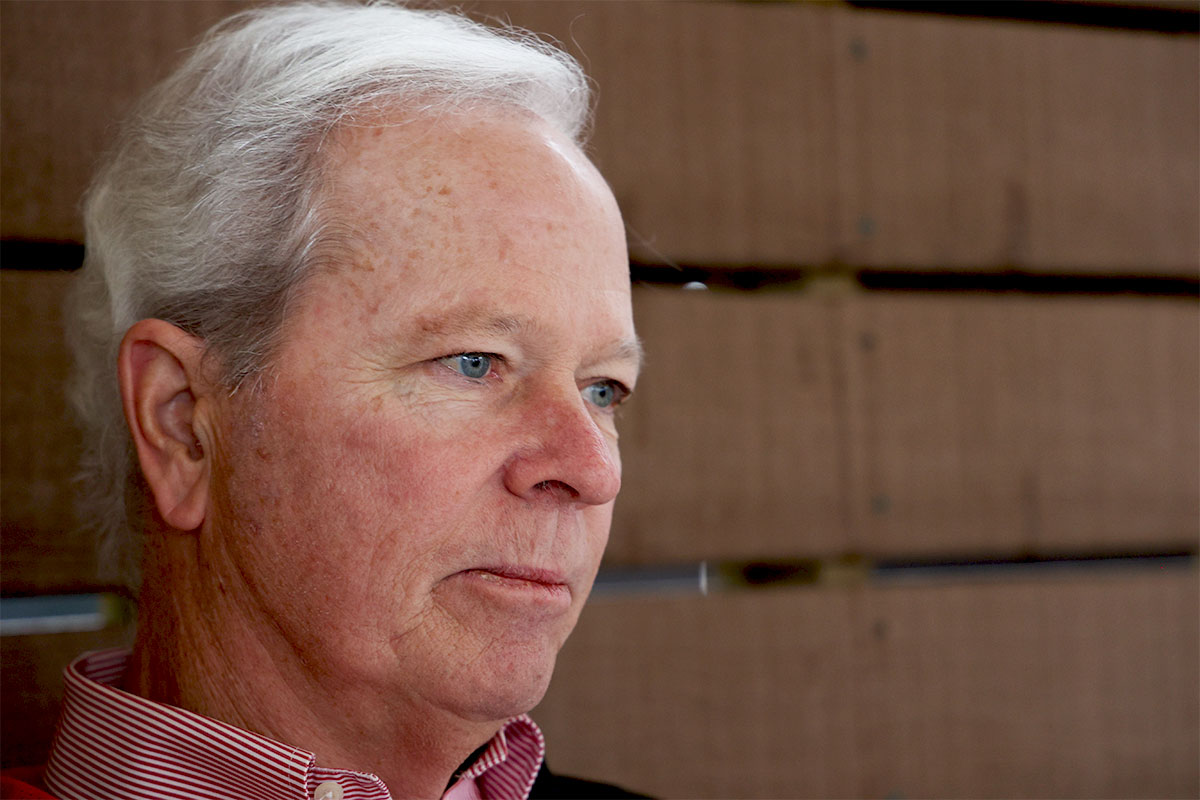JACKSON, Miss.—Ted Henifin first came to Jackson as part of the federal response to the collapse of water production in the capital city. Joining the Unified Command in September, his expertise from years of water and wastewater utility leadership made him the U.S. Department of Justice’s pick for leadership as Jackson’s new “interim third party manager,” a role with unique autonomy from both the City of Jackson and the State of Mississippi.
Since last week’s omnibus bill passed with hundreds of millions in grant funds to restore Jackson’s water system, Henifin has both the resources and the authority to attempt a reversal of decades of infrastructure decline and neglect. The Mississippi Free Press met with Henifin at a Jackson coffee shop late last week.
Henifin, who prefers the title of manager at JXN WTR, the company he founded to take on the job of rebuilding the drinking-water system, seems to understand the weight of the city’s hopes. Midway through the interview, a resident recognized him and called out from the sidewalk. “We’re all pulling for you,” the man said. Celebrity, however minor, was an odd experience for a water administrator, Henifin admitted.
But the opportunity is paired with continuing challenges. On Dec. 23, the same day that President Joe Biden signed off on unprecedented federal support for repairing Jackson’s water crisis, a deep freeze hit the capital city, dropping temperatures overnight and causing leaks deep inside the city’s distribution system.
Days later, the capital city has returned to a familiar stage of crisis: low or no water pressure for most residents, and a systemwide boil-water notice following the risk of groundwater being drawn into the pipe system. Henifin expanded on his earlier interview in a phone conversation with this reporter today as the citywide boil-water notice continued.
The interviews are combined, edited and condensed for clarity and length.
Nick Judin: Jackson’s back under a systemwide boil-water notice. Many residents have little or no water pressure at all. What happened, and how is the recovery going?
Ted Henifin: It appears that we have some major leaks in the system. Here’s what happened: Starting Friday evening, we had some small process challenges at the plant, but we recovered from that well. By midday Saturday we were producing lots of water; we’d caught back up to where we needed to be. We felt good about where we were pressure-wise. And then the pressure just dropped out of the system around afternoon on Christmas Eve and kept falling.
We pushed more and more water into the system but didn’t see any response. Think of it like putting air in a tire with a hole in it. You’re losing pressure as fast as you’re putting it in.
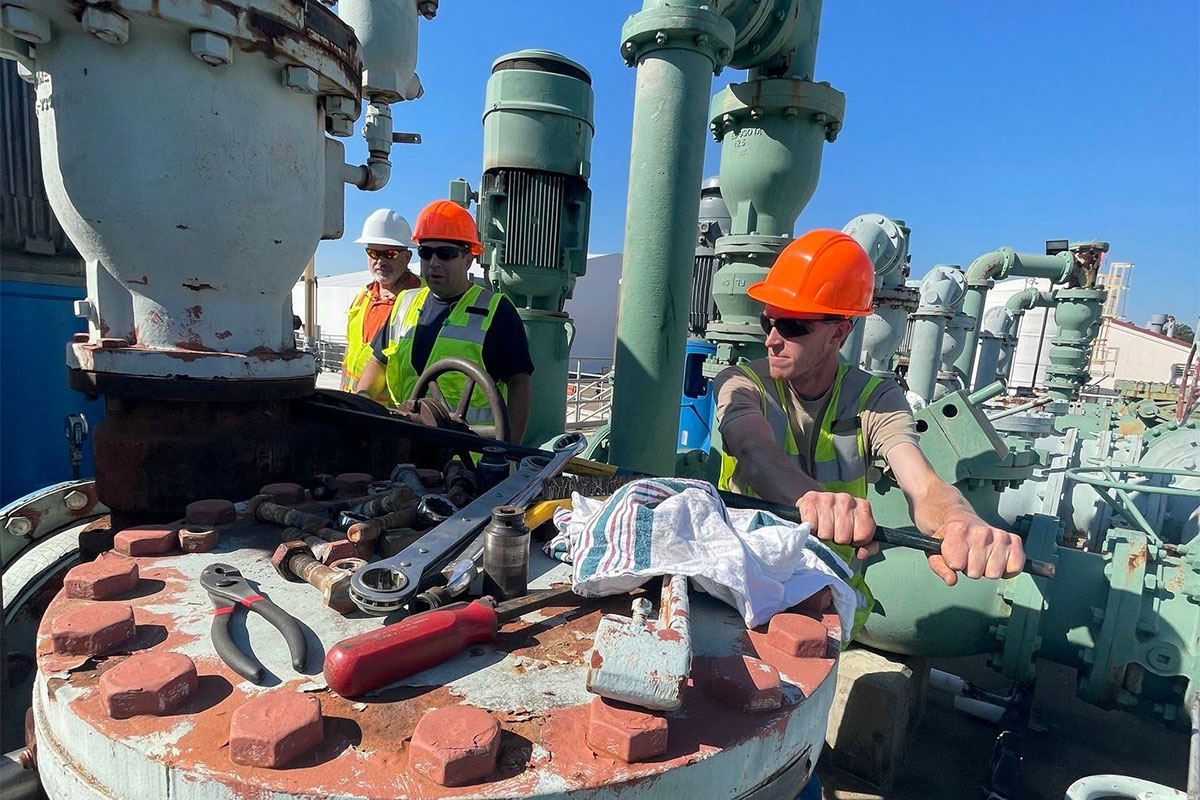
By Christmas Day, we were still challenged to get pressure back in the system. We made the decision to have the boil-water notice go out. We still couldn’t find many big leaks—we’ve found a lot of little leaks here and there, but nothing that could account for this amount of water loss.
We’re continuing today to search for these leaks. I think today we’re going to fly some thermal imaging drones along the lines … a large warm spot here or there could reveal a leak.
So the problem is in the distribution system, not at O.B. Curtis or J.H. Fewell.
Yes, these are all in the distribution system. … Curtis has been putting out around 35 MGD (million gallons of water per day), and Fewell has been putting out 20+ MGD. That’s even higher than we normally produce. We never really lost the volume of water going out over a 24-hour period.
This is where I stress the need for a hydraulic model and data coming in from the system. Right now we’re getting that data from fire hydrants. But that’s a manual, slow effort.
Imagine strategically placed pressure monitors out in the system. You have the model running, you can see pressure dropping, and so you can start really pinpointing where you should be losing water. Then you can investigate.
What can we expect to come next?
We’re making use of the resources we’ve got. As soon as we can get the pressure back up in the system and stabilized, we can start testing to get the boil-water notice lifted. At the moment we’ve got areas of the city that don’t have water at all.
I can’t really give you much about how long it’s going to take to restore pressure until we know what we’re dealing with.
Then let’s move on to the bigger picture. As a layman, I would separate the mending of Jackson’s water system into three categories: acute, chronic and structural. Acute meaning emergency response and triage; chronic meaning many of the big-ticket improvements to avoid the repetitive boil-water notices and Safe Drinking Water Act violations year to year; structural, meaning fixing the broken funding and hiring practices. How would you break it down?
Well, I actually think that is a perfect breakdown.
On the acute side, in terms of simply providing water, I think we’re in decent shape. It’s tenuous, still (lacking) in some of the redundancy and some processes, but we’re in a much better shape than when I arrived in September. Probably better than we have been for a long, long time.
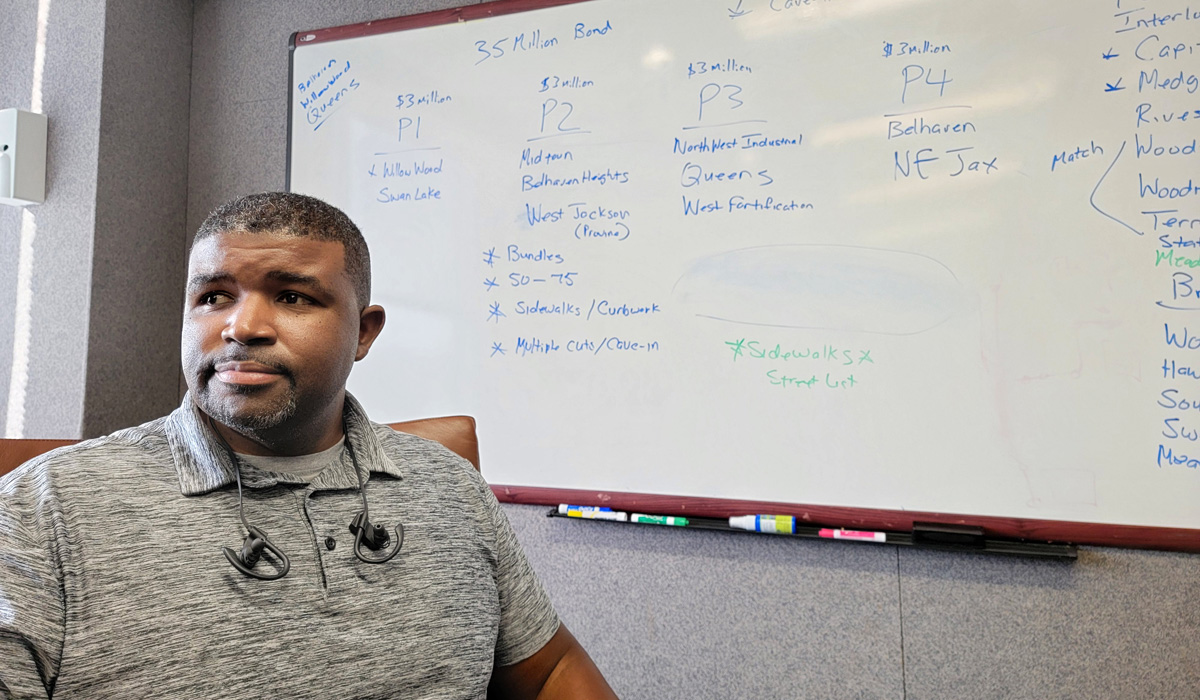
What we have is a handle on what systems are working and which need to be repaired further. We’re able to actually make water consistently. We’ve identified some valving in the system that was not done correctly. That was just purely hard-effort sleuth work by (Jackson Public Works Director) Jordan Hillman, who knows the system even though she was appointed Public Works director, I believe, August 30. She is a quick study, an amazing problem solver with (geographic information system mapping).
Soon we’re going to have this hydraulic model available and a monstrously (powerful) computer’s going to be able to do that work on a much broader scale. We’ll understand so much more. So on the acute side, I don’t know that there’s not much more that’s urgent. There’s chlorine improvements that need to be done at the plant.
We’re still using chlorine gas for water treatment.
That’s really more of a safety concern. A lot of big water plants still use chlorine gas. It’s the absolute cheapest way to add chlorine. But chlorine is a deadly gas. You need to make sure you’re doing it correctly—that it’s protected, it’s got the right ventilation, all the right safety features. We’re a little short on that right now. So I would still call that acute. We will move away from gaseous chlorine in the very near future.
Moving on to the chronic issues, we begin to include the treatment plants as well as the broader distribution system.
The distribution system is a big unknown. We know there’s a history of constant line breaks. Nobody in Jackson would be surprised to learn that. I attributed those breaks to the smaller diameter pipes that we’ve got a lot of.
Pipes smaller than 6 inches—too small for a modern distribution network.
But you know, I was talking to the maintenance crew again just this week, and during the big freeze, he said it was a lot of 8s, 10 and 12-inch pipes.
It wasn’t the 2s, 4s, and 6-inch pipes. So we really don’t know what’s causing some of this. Jackson doesn’t keep great records of where we’ve been and what we’ve done. We need to try to establish pipe conditions—figure out where the repetitive breaks are and do some real analysis. Is it particular soil types that’s causing it? Is it a particular pipe material?
It’s not age.
Really?
If you do a deep dive on utilities across the country, old pipes are not always the ones that are failing first. You can get old pipes put in that, in the right conditions, will last for hundreds of years, as opposed to 50 or so.
Jackson’s system really isn’t that old. Look at the cities in the Northeast and the Midwest that have had big water systems since the 19th and even 18th century. They’re digging up wooden pipe systems in Philadelphia and Boston and D.C. These are much older than Jackson’s.
Everyone wants to focus on how old the pipes are. It’s not age. It’s how they were installed, the material that surrounds them, how the pipe bedding protects it from the soil around it. And of course everyone talks about the yazoo clay, which I think is a huge factor here, but shouldn’t be.
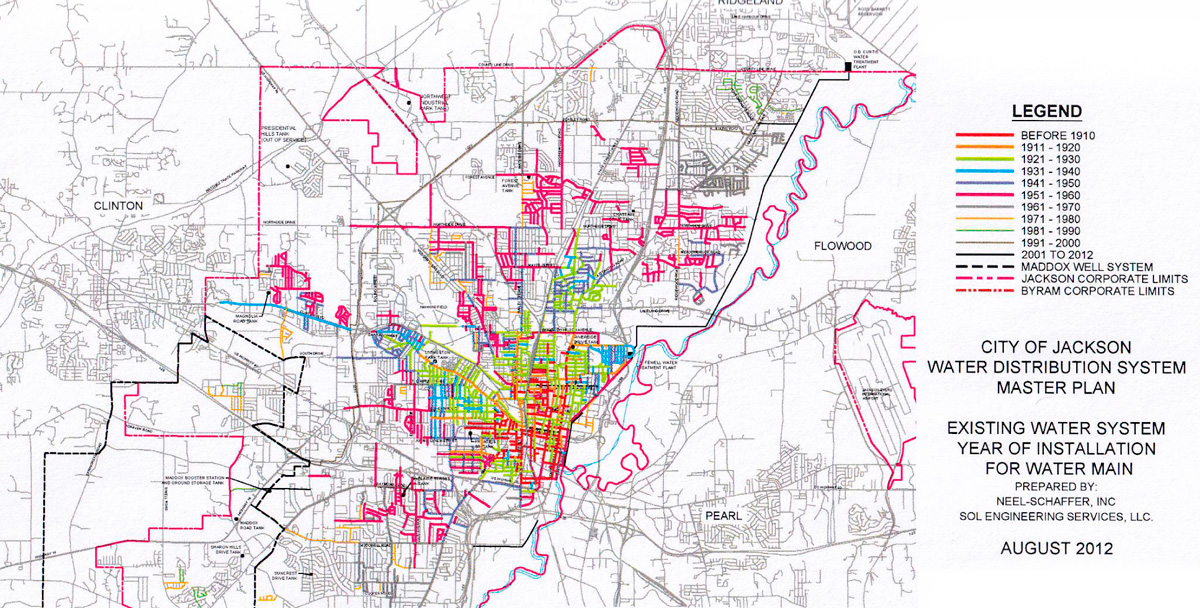
Proper engineering can install pipes in this material, understand how it’s going to move in different weather conditions and protect it. I’m not sure if anyone spent that kind of time, or if not everyone did. We probably have some pipe that was put in during certain timeframes that’s in really good shape, because whoever was doing it took the time to really figure out how to do it right.
It could be that you’ve got just areas of town that the soil conditions are so much different than anywhere else that it changes. But that’s going to take a lot of analysis.
First we have to understand the system (with a) hydraulic model. That’s the chronic issue. If you don’t know what’s going on in the system, how it’s operating, I hate to say it, but we’re out here flying blind. There’s no valves to change, no booster pumps to change. There’s no way to move pressure in the system. All we do is pump water in from the two locations and the wells and hope for the best.
And assume some percentage is going to get lost somewhere in the system.
A modern system would have pressure zones and control valves. You lose a little bit of water, you have a big break in one part of the city, everyone doesn’t isn’t feeling it. The elevated tanks actually help in that zone to protect it. So you can have a shutdown from the plant for a few hours and still have enough water to survive without really noticing.
Which isn’t possible if all the elevated tanks keep draining without us knowing why.
Well, they’ve gotten a lot better since Jordan Hillman found those few valves. All of a sudden we’re getting real stability on the tanks. The way they were supposed to be fed through the distribution system was cut off. The water was having to go crazy directions to get back to the tank, and it loses pressure as it moves in the pipe.
We’re going to figure out how the system’s supposed to work. We’re going to have an engineering firm optimize that to understand where the best improvements are. Is it pressure zones controlled by booster stations? Additional tanks, bigger pipes? All that will be done in the first six months of this year. We’ll know where we need to make our investments in the distribution system to improve the pressure issues and improve the reliability.
The pipe breaking is going to take longer. We’re going to do a lot of soil analysis. We’re going deep on what records we can find. Interviewing people that have maintained pipes. We’ll try to understand if there is a pattern where the breaks have been. We’ll do what is basically an engineering forensic analysis on what’s happened in the past.
In Jackson, when the weather changes, we have hundreds of breaks, more breaks per mile of pipe than most systems experience.
Which leads to constant boil-water notices all over the city.
Those are going to continue for now because they’re preventative. Jackson actually takes a super conservative approach to it. If you start talking to other water systems across the United States, if they have a break, they isolate and fix it. If they don’t have a proven, significant pressure loss, they don’t issue a boil-water notice. Because there’s little chance that anything entered the water system. In Jackson, if there’s a break, there’s basically a boil-water notice. There’s no analysis there.
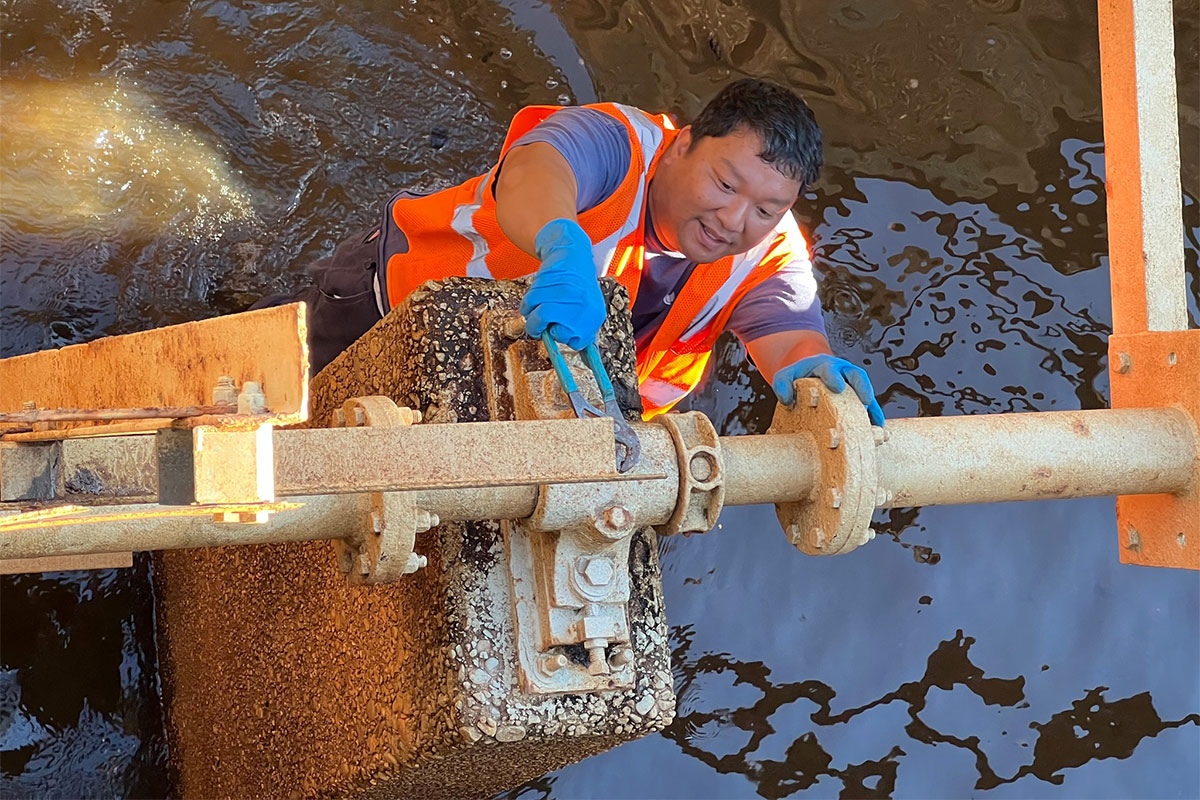
(It all comes down to) building a better understanding of the system through a hydraulic model. First off, we get an understanding of where the system needs to be improved and then we can triage the system when there is a problem. That means even before we’ve solved the chronic water-line break problem, we can cut down on the amount of sheer boil-water notices. Because we can isolate areas.
Knowledge is the biggest part of that problem. We just don’t have the information.
I want to dig a little bit deeper into this lack of information. We’ve lacked the necessary hydraulic model for over a decade. One of the first things that I looked at when I was trying to understand our water system is the 2013 Neel-Schaffer master water plan. And that calls for-
A hydraulic model! And here we are 10 years later!
How did it take this long?
I mean, I’m mystified. When I got here, by the first or second day I started asking about our hydraulic model. No one had one. “Well,” I asked, “how do we operate this system?” I couldn’t find any answers.
So I got on the phone with my CEO from the U.S. Water Alliance, who I was working for at the time, and said “hey, we need a hydraulic model.” So they found David Totman from Innovyze, who was at the conference, cornered him and said Jackson needs a hydraulic model. He got on the phone with his CEO, and next thing you know he tells us, “We’re on it pro bono.”
My question is, how in the world can you design a major transmission line and add it to our system without modeling what it will do to the system? Again, I’m trying not to look backwards too much, but as you pointed out, they were asking for a model in 2013, but they’ve designed and implemented pipe projects since then. Without a model?
Tell me what goes into developing a hydraulic model.
It’s a (mathematical simulation) of your system on a computer.
You determine where your pipes are, the diameters, materials, and other features, and then … (you’re able to) mathematically determine where the water wants to go. And this is repeated for every section of pipe, every valve, every turn, every bend. You’re able to run scenarios where you put water in at a certain volume of pressure at different locations. It’s this robust tool simulating what’s actually happening in the system.
Then you have an engineering firm start running scenarios where you introduce change into the system. What if this pipe was 18 inches or 24-inches? You run it and check. Oh, it solves this problem. What if we put a pressure control valve here? Oh, this is what happens.
Without this model, you’re flying blind.
You’re putting together projects before you know how they’ll turn out.
Yeah. Right now we just put out as much pressure from the plants as the system wants to take … That’s a ridiculous way to run a system this size.
In the wake of the 2021 freeze, I asked Dr. Charles Williams why Jackson hasn’t had a hydraulic model. He told me that “it has been discussed in the past, but no formal action or funding has been authorized to implement it.” How much would it have cost?
We’re probably getting somewhere between $100,000 to $200,000 worth of effort for free.
We could have had this desperately needed hydraulic model for only $200,000?
Probably less! Money should not have been the reason this wasn’t done. I can’t tell you why it wasn’t done, unless folks didn’t see the utility or the value, or didn’t know enough about big systems. If you have a very small system, you can do a lot of that work by hand. It’s how we did it way back in the day.
But as I’ve said before, we can spend a lot of time looking backwards. My job is to continue to look forward.
I understand you don’t want to spend too much time looking backward. But should this have been a demand that, say, the EPA made of the City if the City wasn’t making it a priority?
I don’t want to throw stones at anybody. You can’t step back into where they were at the time. Still, I don’t understand why (between) the EPA or the Mississippi State Department of Health or someone there was nobody demanding that “hey, you gotta have a model or you just can’t operate this system.”
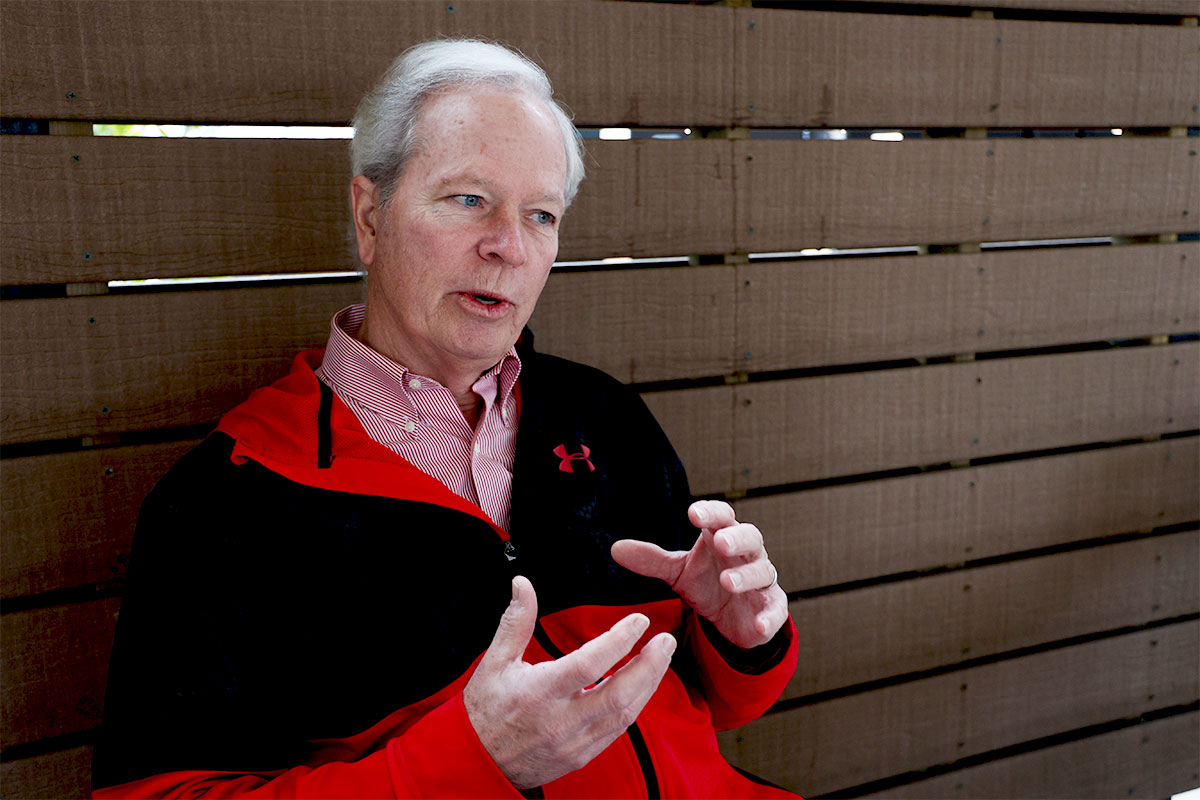
Staffing is one of the biggest structural problems facing Jackson’s water system. Are we on track for sustainable staffing at our water treatment plants? How are we doing today?
Essentially, we have the same City of Jackson workforce at the plants. We’ve got a supplement of four licensed operators from a company called Water Talent out of California.
We also now have Jacobs, and they’re one of the largest North American operations and maintenance companies for water systems. They operate 200 water systems in the United States from giant ones like Seattle down to much smaller systems. Jackson, I think, is in their sweet spot for operations and maintenance.
They already have staff on the ground: primarily maintenance staff. They’re hiring one more former operator from Jackson. He’s ready to go to work and still has his license. So those three extra experienced water operators have added a lot of stability in the process. They can manage changes and communicate with each other well.
From an operations standpoint, we’re in better shape. You have to have a Class A operator on-site at each plant every shift. If you’re running 12-hour shifts, seven days a week, you need 14 shifts covered each week.
If you only have two or three Class A operators, we’re talking … 84 hours a week? Those workers are not at their best. It’s not because they aren’t trying. Humans can’t work 84-hour weeks at their best. And a lot of that is sitting in front of a monitor.
And at O.B. Curtis and J.H. Fewell, much of that is being done without the advanced automation that assists running the supervisory control and data acquisition (SCADA) system.
Well, imagine when you’re treating the water with chemicals. You’re watching the parameters you’re trying to control. Let’s say pH (acidity). Suddenly you start noticing pH rising or falling. You tweak the chemical dose. By that time, it’s already too late. Now instead of getting a nice straight line of dosed chemical within parameters, now it drifts the other way. Now you’ve got to turn it back down. It creates this sawtooth pattern.
It sounds a bit like adjusting the heat in an old shower: too cold, then too hot, back and forth.
Exactly. And it means the operator’s got to be right on target. If he drifts off or loses focus for any reason—for example, because he’s been working for 80 hours, you can have this wild swing. That’s been the problem.
Flow pace dosing has a computer watching every second. It sees those little changes and changes the dosing incrementally, in tiny amounts. Ultimately, you get this nice straight line, you preserve chemicals, and you don’t have these wild swings, where suddenly you’re out of compliance.
Do the water treatment plants have instrument technicians?
We do, at both plants. Both of them are great people. Both of them needed more guidance and support. For a while they’ve lived on their own without a whole lot of support: no one to mentor, teach or train them.
It sounds like staffing is no longer at an extreme crisis level. Looking forward, how do we build up a sustainable staffing model for Jackson’s water system?
The biggest benefit of going with a large national firm like Jacobs is their reputation, reach, and their ability to train and develop a workforce. I’ve had to explain this to city workers that are worried about their future. I understand that. Uncertainty and change are tough for everybody.
But Jacobs’ model doesn’t include a warehouse full of people on the shelf waiting to be deployed to wherever they end up going next. They rely on the local workforce. It’s expensive to try to relocate people. Their business model is to hire local: to train and develop all the employees that are already working.
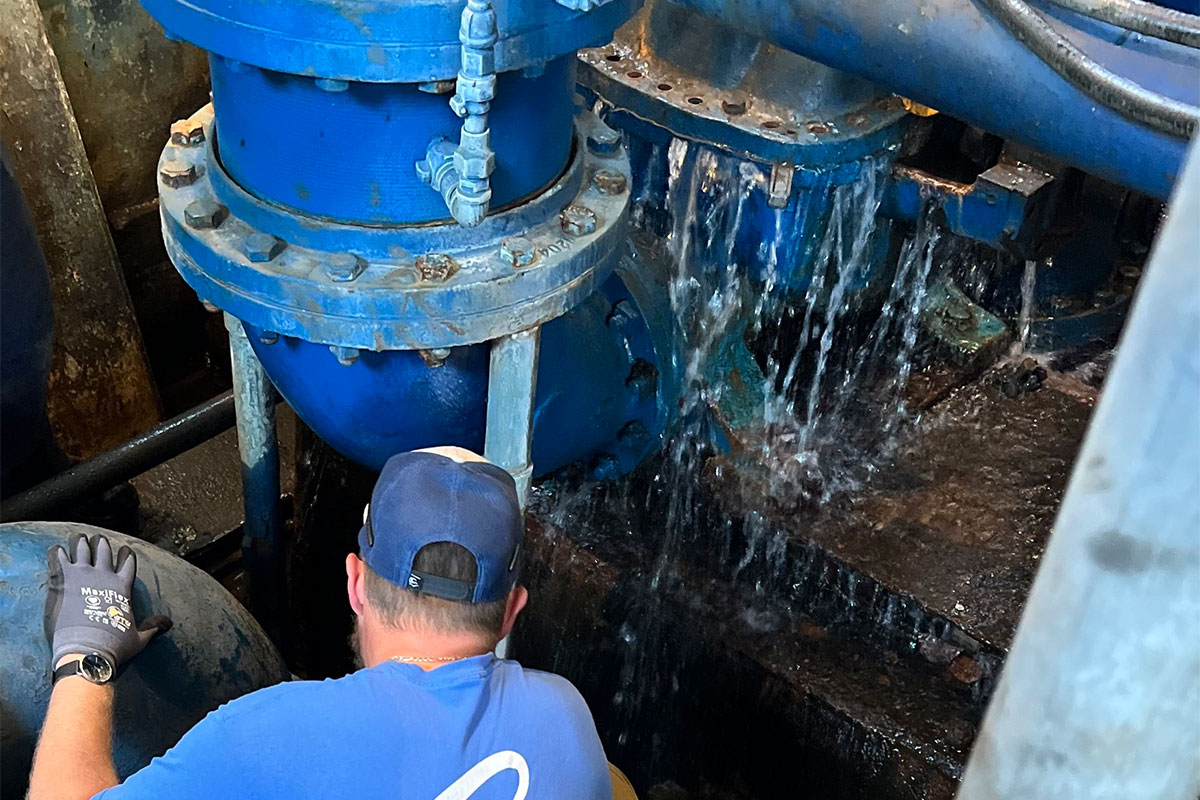
It’s so important that we lay the groundwork for workforce development. You’ve got to have an appropriate salary structure. You need appropriate policies to give folks the tools and equipment they need to work. But you also need to give them the autonomy to get the work done and to feel that they’re making a difference.
People want to feel that “I’ve got meaningful work to do. I’ve got a boss that cares about me. I’m getting reasonably compensated for what I do, and I’ve got the autonomy to do what I need to make it happen.” We’re going to create that environment. I’m convinced that Jacobs will help create that environment.
On top of that, we’ll start really publicizing the benefits of jobs in water. We’re going to work with local community colleges to get the word out. This is not just someplace to go if you can’t find a job anywhere else. Working with water is a very meaningful, needed job in the United States.
Every water association is struggling to deal with the fact that we’re losing people out of the water industry. We’re not seeing a lot of kids and young adults and others changing careers to come into it. This is not unique to Jackson, but we’ll benefit from the fact that the whole country’s trying to change that. We’re going to put Jackson on the right trajectory.
With the appropriate rate structure, with significant capital funds, we should be able to figure out a way to become very competitive from the salaries that are needed.
Speaking of those capital funds, Jackson’s water system is on track to receive $600 million in federal funds. Previously, the cost of revamping the water system was estimated at about a billion dollars. Who takes control of the funds, and how are they spent?
Looking at the language, the legislation puts the $600 million under the control of the Environmental Protection Agency; $150 million of that is what they call “technical assistance,” which means broad use for EPA. That could be used for buying out debt, or providing professional services. It can even be used for operations and maintenance costs.
This is something that EPA has really struggled with. They’re statutorily prohibited from paying for (operations and maintenance). And so you get in a situation like this where there’s a desperate need from a system, and they don’t have any source of funding that they can use to actually operate the system.
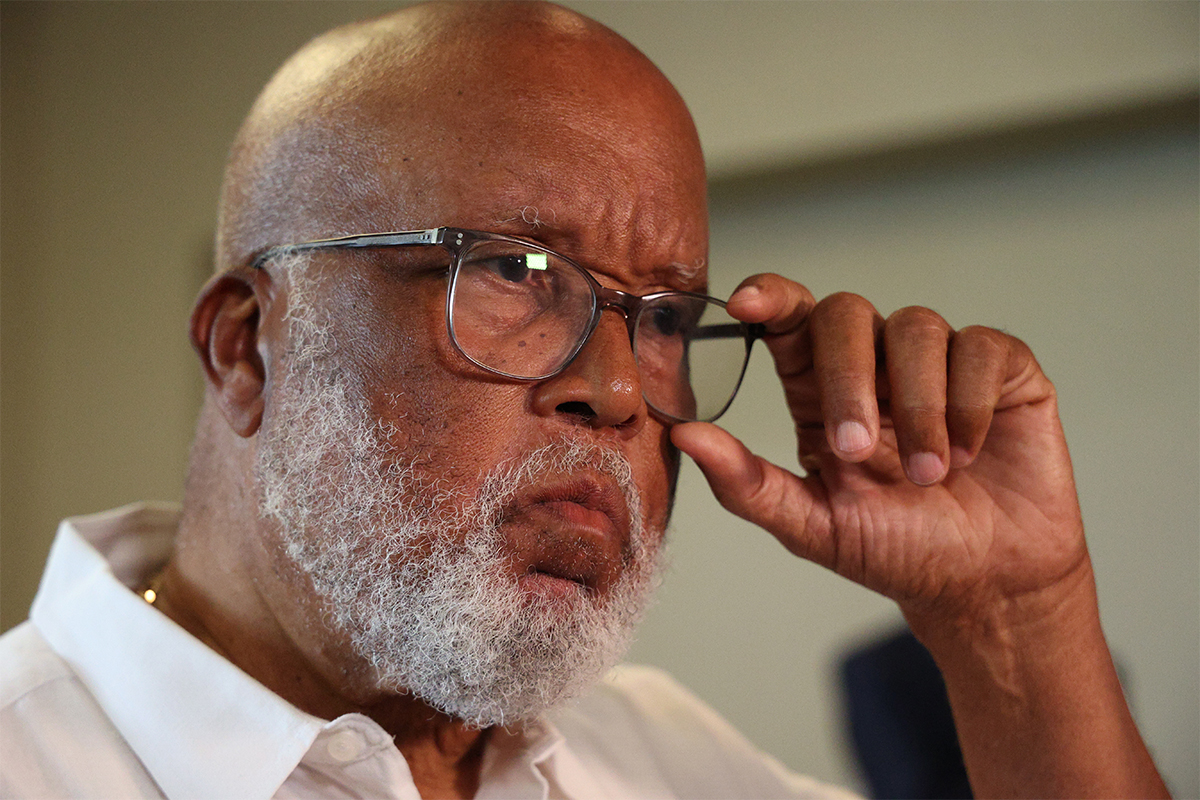
Initially that was one of the dire parts of this disaster. In the early days, O&M was the real need. Luckily, the Federal Emergency Management Agency funds that were coming through (the Mississippi Emergency Management Agency) didn’t have those restrictions. That kept us going. That $150 million is going to be critical.
As I understand it right now, the $450 million is going through the State Revolving Loan Fund (SRF), which is a very mature but very … (Henifin laughs) bureaucratic system to put capitalization grants into the states.
It’s maybe a hundred-percent principal forgiveness, which is interesting language. It’s EPA essentially saying it’s a grant, but that they don’t like to use the word grant, so it’s a “principal forgiveness loan.” I think it must follow the statutorily defined SRF loan path, so I assume it will come to the state with rails and safeguards around it to say this SRF funding cannot be used for anything except Jackson.
My understanding is there’s another $100 million coming that was authorized through the National Defense Authorization Act.
That $100 million is part of the Water Resources Development Act. That one is coming through the (U.S. Army Corps of Engineers).
I know there’s an authorization—I’m assuming the appropriation was part of the omnibus bill. It’s being added to the Army Corps work that we’ve already started on them: doing small diameter pipe replacements as well as sewer lines on those same streets.
They already had $20 million for Jackson.
Is it accurate to say that Jackson is about to be working with $720 million in funding total?
Yeah, I think so. I think that’s accurate.
We’ve already arrived at the SRF loan program: $450 million, going through the revolving loan fund, with the intention that it be 100% principal forgiven and, therefore, essentially a grant. The SRF has been available for decades now. Jackson has very rarely made use of it. Mostly, the capital city has used the bond market. What about the SRF program has been unsuitable for the city?
I worked for 15 years for the (Hampton Roads, Va.) Sanitation District. When I arrived there, they had a very low appetite for debt, and they’d been one of the utilities that really hadn’t invested significantly in their infrastructure—beyond what they needed to do to pass regulations.
The system was in good shape, but it had a very small amount of debt for the size of the utility, and it was not revolving loan fund debt. And their finance director at the time was pretty anti-revolving loan fund. One, because it actually has a lot of strings attached. You’re under a federal grant program, which audits those strings. You have to make sure you’re following the Davis-Bacon Wage Act, and making (specific) purchases.

Congress loves to just lay additional requirements onto this money that they’re putting into communities to be spent on capital projects, big construction and infrastructure, but they make it a little harder to do.
All that requires additional administration. When you award a contract under an SRF, you have to have someone auditing the contractor’s payroll, making sure they’re meeting Davis-Bacon wage requirements. In many communities that’s not a real problem because the wages are already way above that. I’m not so sure that’s been the case here in Jackson, but we’ll find out.
So that’s one reason. It’s just an added administrative burden. You have to do a special audit on your federal funds. Those layers have made it, for many communities, a bigger challenge. If the spread wasn’t huge between what you could get the money for on the bond market versus what you were going to get from the SRF, which for years wasn’t like it is today.
Especially here. Principal forgiveness wasn’t a big part of the SRF program. It’s a pretty small piece, relegated to certain communities. Those hassles have kept people away from the program.
I can’t really speak for the history of Jackson and why they didn’t use the SRF.
There’s three open loans, right? Two that are closing and one that’s open. They didn’t do a lot of private bonds there, either, but the total amount is a big number from, I think, 2013 to 2015.
Let’s talk about that rate structure that you brought up. I’ve personally experienced months without a water bill and then a massive charge out of nowhere. It’s jarring, even as someone fortunate enough to be able to pay it.
Really? Even as a journalist?
Dude.
(laughter)
I can’t believe I’m getting roasted by the water guy. (laughter) Really though, one of the problems we’ve had, obviously, is the inability to consistently obtain water payments.
It’s a bit like living in scarcity, you know? You’re dealing with fear of hiring, the fear of buying equipment, the fear of doing all these things you’ve budgeted for because you realize your revenue is not coming in to match that.
The inability to collect adequate revenues has definitely aggravated and maybe even caused some of these problems.
You have an interesting idea for Jackson’s water rates. You have suggested determining consistent rates based on property value, not consumption.
Affordability has been a major focus of water utilities for the last 10 years—maybe a little longer. It’s the challenge of setting the rate structure so that everyone can afford it.
We’ve all been trying to figure out how to set a rate that can be afforded at the bottom. Think about how your income is distributed across your population. Here in Jackson just over 25% of people are at poverty-level. So if you set a rate that they can afford, that means 75% of your population is paying way, way less than they could afford to.
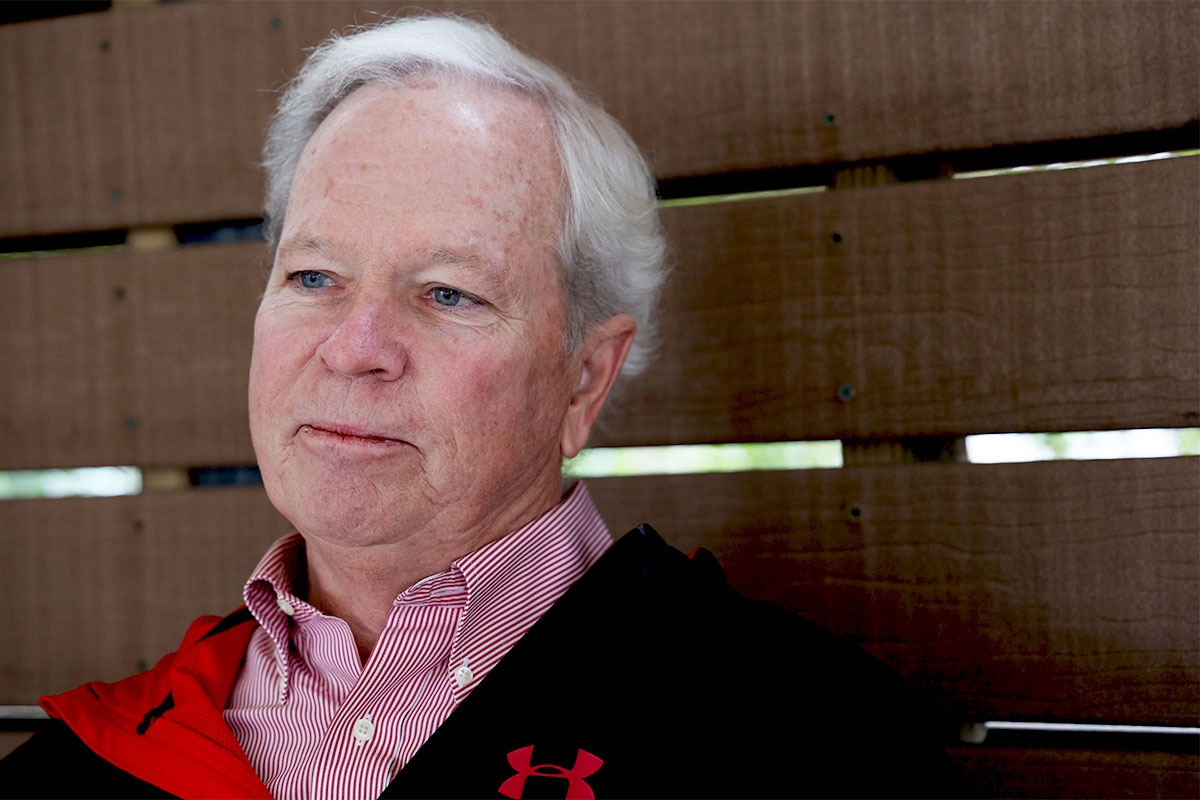
But if you’re at the poverty level and you’re paying, say, 10% of your income towards your water bill, every month you’re having to balance water with groceries, medicine and electricity. You’re making those tough choices every day.
Our rate structures are fundamentally broken because we base them on consumption. You’ve got a service charge, a base rate, and then the majority of your water bill is based on how much you use. Where’s the cost in providing water? It’s not the water, it’s the pipes, it’s the plant, it’s the people.
You’re saying that water consumption is not a huge amount of the cost to the system.
It’s almost none of the cost! We don’t pay for the water! We’re pulling it out of the (Ross Barnett) Reservoir, what cost is that to us?
Water is the most capital-intensive utility by far. Look it up. You’ll see these nice charts showing how much capital you have to put in for every dollar of revenue. It’s like seven to one on the water side. On the electric, on phones, it’s like a fraction of a dollar. It’s crazy the amount of capital that has to go into it. It’s a tough system.
We need to rethink our rate system. I’m not saying that a property-value basis is the only way to do it, but we’re going to look at a variety of options.
One of the most interesting elements of rate plans not based on consumption is it invalidates the need to fix Jackson’s broken water metering and billing system, because it invalidates water meters entirely. How much does that save the city in upfront costs and continuing costs over time?
You save a huge amount.
Right now we’re basically (paying for) metering as a service: a monthly charge per meter. It’s going to add up. Then there’s installation charges.
Add to that every customer that has a problem with their meter calling, and having to resolve that issue by sending someone out. Doesn’t matter if the meters are automated or manually read. There are going to be errors.
I mean, it just happens when you’re reading 50,000 to 60,000 meters a month. Say you have a 1% error rate: Every one of those customers you need to go solve that problem. That’s hours of dealing with frustration.
How much autonomy do you have to make these decisions? To what degree can the City or the State intervene in the plans and structures that you come up with?
The order gives me very broad autonomy. There are some restrictions around borrowing money. Beyond that, there’s no doubt that other than (federal) Judge (Henry) Wingate, there really is no other check and balance.
But I’m not the kind of person that’s going to exercise that authority, unless everything falls apart. I believe in relationships, in trying to build consensus, involving the community so we’re making the right decisions.
Still, at the end of the day, it’s my decision under this order. I don’t know how that sounds, maybe terribly egotistical. But the buck stops here, and I’m going to make the right decision for the citizens of Jackson. I’ll try to bring everybody along, to make sure everyone’s on board.
But what I’m going to do is pretty straightforward. It’s going to have strong, technical data behind it to say this is the direction we need to go. The engineering solutions to our water system will be tried and true.
Jackson and Flint, Mich., are clearly the most egregious examples of water infrastructure decline in America. But they represent a much broader pattern. Is Jackson getting ahead of the pack in finally getting a proactive, federal solution to this national problem?
I would agree. Jackson has some unique characteristics that maybe give it a little bit of all of the issues that other communities are only going to have a few of. But at the same time, I agree that there’s a lack of investment in U.S. infrastructure—and specifically in buried infrastructure (like water and sewage.)
Roads and bridges get more attention. Little has been done in the buried infrastructure world. I think Jackson is the canary in that particular coal mine.
The concern for the EPA and the U.S. is that I don’t think they’ve got $600 million to send to every city in the nation of Jackson’s size. I’m glad Jackson was first in line, because as a nation, this is going to be a real problem over the next 20 years.

